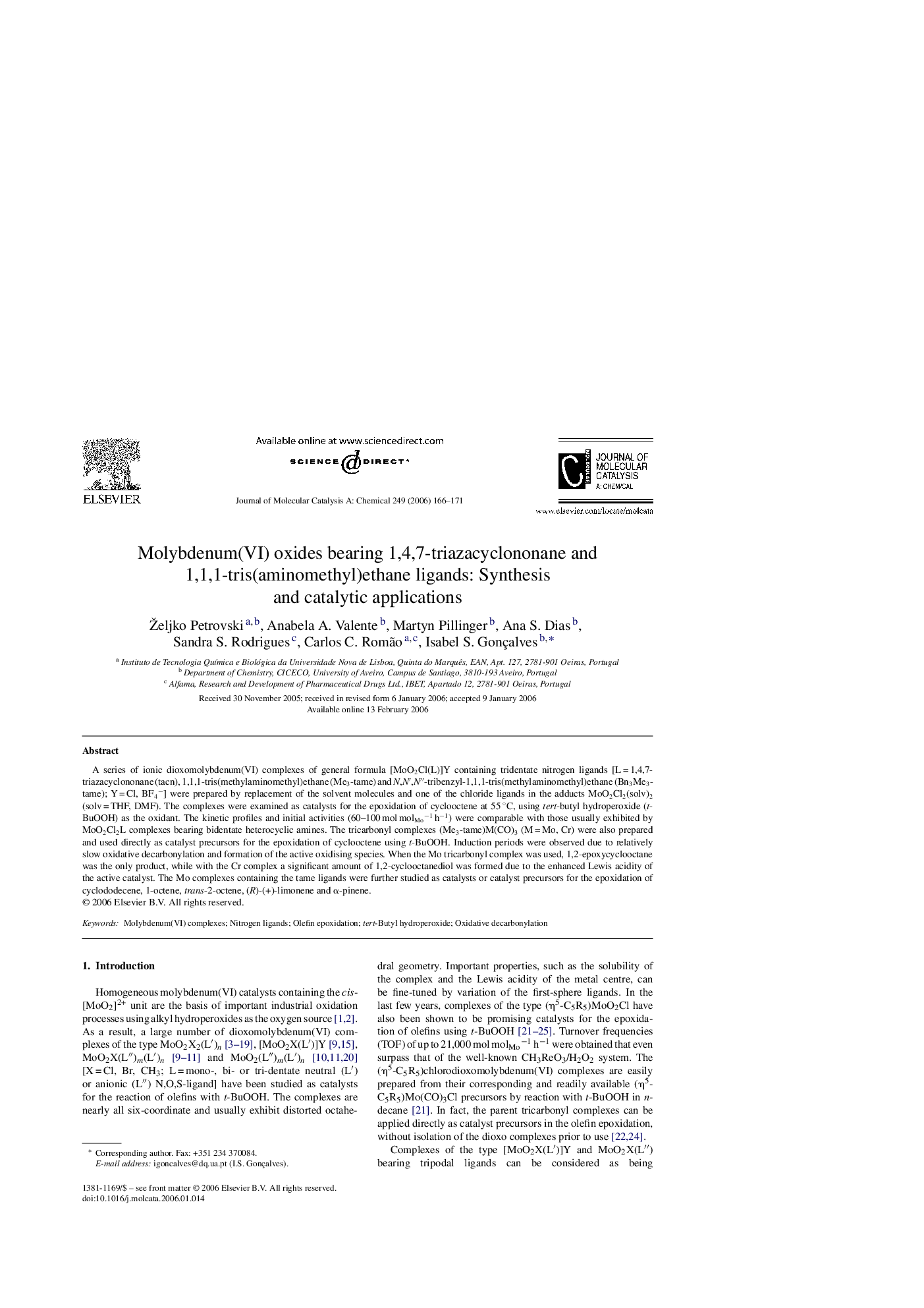| Article ID | Journal | Published Year | Pages | File Type |
|---|---|---|---|---|
| 69024 | Journal of Molecular Catalysis A: Chemical | 2006 | 6 Pages |
A series of ionic dioxomolybdenum(VI) complexes of general formula [MoO2Cl(L)]Y containing tridentate nitrogen ligands [L = 1,4,7-triazacyclononane (tacn), 1,1,1-tris(methylaminomethyl)ethane (Me3-tame) and N,N′,N″-tribenzyl-1,1,1-tris(methylaminomethyl)ethane (Bn3Me3-tame); Y = Cl, BF4−] were prepared by replacement of the solvent molecules and one of the chloride ligands in the adducts MoO2Cl2(solv)2 (solv = THF, DMF). The complexes were examined as catalysts for the epoxidation of cyclooctene at 55 °C, using tert-butyl hydroperoxide (t-BuOOH) as the oxidant. The kinetic profiles and initial activities (60–100 mol molMo−1 h−1) were comparable with those usually exhibited by MoO2Cl2L complexes bearing bidentate heterocyclic amines. The tricarbonyl complexes (Me3-tame)M(CO)3 (M = Mo, Cr) were also prepared and used directly as catalyst precursors for the epoxidation of cyclooctene using t-BuOOH. Induction periods were observed due to relatively slow oxidative decarbonylation and formation of the active oxidising species. When the Mo tricarbonyl complex was used, 1,2-epoxycyclooctane was the only product, while with the Cr complex a significant amount of 1,2-cyclooctanediol was formed due to the enhanced Lewis acidity of the active catalyst. The Mo complexes containing the tame ligands were further studied as catalysts or catalyst precursors for the epoxidation of cyclododecene, 1-octene, trans-2-octene, (R)-(+)-limonene and α-pinene.
Graphical abstractReaction of the solvent adduct MoO2Cl2(solv)2 with tridentate N-ligands based on either 1,4,7-triazacyclononane (tacn) or 1,1,1-tris(aminomethyl)ethane (tame) leads to octahedral cationic complexes, which are moderately active catalysts for the epoxidation of olefins with t-BuOOH. It is also shown that the tricarbonyl compounds (Me3-tame)M(CO)3 (M = Mo, Cr) can be used directly as catalyst precursors for olefin epoxidation since under the applied reaction conditions they undergo oxidative decarbonylation into high oxidation state oxo complexes. Figure optionsDownload full-size imageDownload as PowerPoint slide
